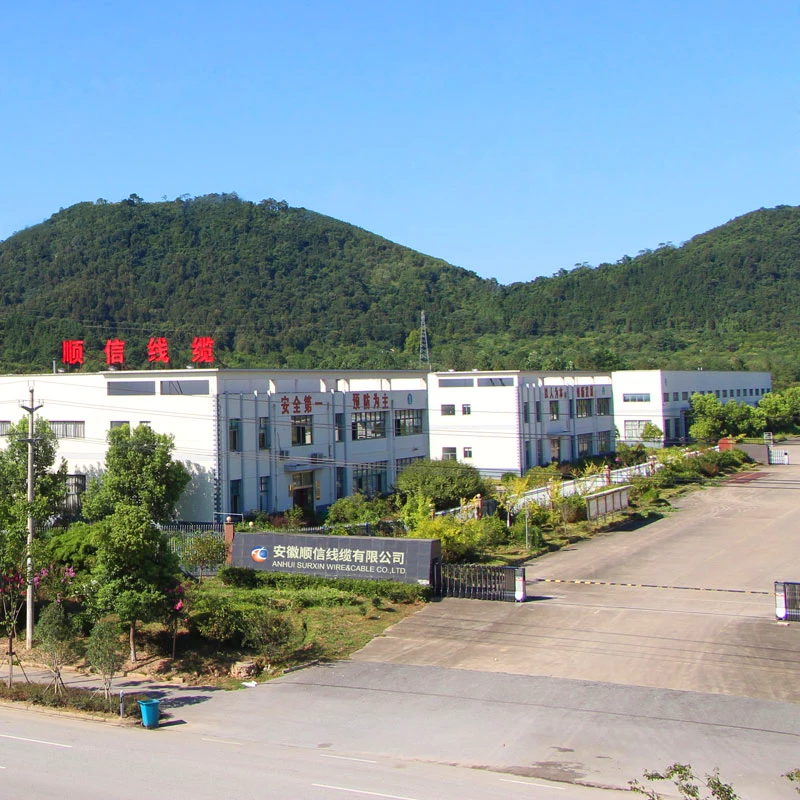คู่มือการเดินสายเครือข่ายที่ครอบคลุม
การเดินสายเครือข่ายเกี่ยวข้องกับการเชื่อมต่ออุปกรณ์เข้ากับแหล่งอินเทอร์เน็ต, รับประกันการสื่อสารและการถ่ายโอนข้อมูลที่มีประสิทธิภาพ. เพื่อประสิทธิภาพสูงสุด, ปัจจัยต่างๆ เช่น ความยาวสายเคเบิล, ป้องกัน, อัตราข้อมูล, และสถานที่ติดตั้งต้องคำนึงถึงด้วย.
อัตราข้อมูล, หรือความเร็ว, ของสายเคเบิลเครือข่ายจะกำหนดความเร็วในการถ่ายโอนข้อมูล, วัดเป็นล้านบิตต่อวินาที. ความเร็วนี้จะแตกต่างกันไปขึ้นอยู่กับว่าสายเคเบิลนั้นใช้ในอาคารพาณิชย์หรือในบ้าน. สายเคเบิลเครือข่ายอาจมีความยาวมากพร้อมฉนวนหนาเพื่อป้องกันตัวนำสายเคเบิลจากการรบกวนทางแม่เหล็กไฟฟ้า (อีเอ็มไอ) และปัจจัยภายนอกอื่นๆ. ในการตั้งค่าเชิงพาณิชย์, โดยทั่วไปแล้วสายเคเบิลเครือข่ายจะมีระดับการกันไฟและระดับ plenum.

สายเคเบิลเครือข่ายสี่ประเภท
สายเคเบิลเครือข่ายแบ่งออกเป็นสี่ประเภทหลัก: โคแอกเซียล, คู่บิดเกลียวหุ้มฉนวน (สทป), คู่ตีเกลียวที่ไม่มีการป้องกัน (utp), และใยแก้วนำแสง.
1. สายโคแอกเซียล
สายโคแอกเชียลมีตัวนำตรงกลางล้อมรอบด้วยเกราะโลหะ, หุ้มฉนวนด้วยชั้นพลาสติก. โล่โลหะป้องกันการรบกวนจากภายนอก, ในขณะที่เปลือกด้านนอกช่วยปกป้องสายเคเบิลจากความเสียหายทางกายภาพ. สายโคแอกเชียลสามารถมีตัวนำแบบแกนเดียวหรือหลายแกนได้, ส่งสัญญาณแม่เหล็กไฟฟ้าได้อย่างมีประสิทธิภาพ. ในอดีต, สายเคเบิลเหล่านี้ถูกใช้ในเครือข่ายคอมพิวเตอร์ในยุคแรกๆ.
2. คู่บิดเกลียวแบบชีลด์ (สทป) สายเคเบิ้ล
สายเอสทีพี, ที่ใช้กันทั่วไปในสภาพแวดล้อมทางธุรกิจ, ได้รับการออกแบบมาเพื่อจัดการกับพื้นที่ที่มีการรบกวนสูง. สายอีเธอร์เน็ตเหล่านี้ประกอบด้วยสายสีคู่ที่บิดเกลียวเข้าด้วยกัน, ห่อด้วยโล่โลหะ, และหุ้มไว้ในปลอกพลาสติก. สายเคเบิล STP เหมาะอย่างยิ่งสำหรับการขยายระยะทางของสายเคเบิลและให้การเชื่อมต่อเครือข่ายที่แข็งแกร่ง.
3. คู่บิดเกลียวที่ไม่มีฉนวนหุ้ม (utp) สายเคเบิ้ล
สาย UTP ใช้กันอย่างแพร่หลายในอุตสาหกรรมและโทรคมนาคม. สายเคเบิลเหล่านี้ประกอบด้วยลวดคู่บิดเกลียวที่หุ้มด้วยปลอกพลาสติก, สร้างวงจรที่ลด EMI. สาย UTP มีราคาไม่แพงมากเมื่อเทียบกับสาย STP, ทำให้เป็นตัวเลือกยอดนิยมสำหรับการใช้งานต่างๆ.

4. สายเคเบิลใยแก้วนำแสง
สายเคเบิลไฟเบอร์ออปติกประกอบด้วยแกนที่ทำจากแก้วหรือพลาสติก, ป้องกันด้วยการหุ้ม, บัฟเฟอร์, และเสื้อแจ็คเก็ต. ชั้นเหล่านี้ช่วยปกป้องสายเคเบิลจากความเสียหายและการรบกวน, ทำให้สายเคเบิลใยแก้วนำแสงเหมาะสำหรับการส่งข้อมูลทางไกล. โดยทั่วไปจะใช้เพื่อเชื่อมต่อเครือข่ายข้ามสถานที่ต่าง ๆ และมีสองประเภท: ไฟเบอร์โหมดเดียว (เอสเอ็มเอฟ) เพื่อระยะทางที่ไกลขึ้นและไฟเบอร์แบบมัลติโหมด (เอ็มเอ็มเอฟ) เพื่อความจุข้อมูลที่สูงขึ้น.
ประเภทต่างๆ ของสายเคเบิลเครือข่าย
สายเคเบิลเครือข่ายแบ่งประเภทตามประสิทธิภาพและการใช้งาน, ครอบคลุมแปดส่วน:
- แมว1: ใช้สำหรับสายโทรศัพท์และโมเด็ม, สาย UTP เป็นหลัก.
- แมว2: ใช้ในคริสต์ทศวรรษ 1980 สำหรับโทรศัพท์และเครือข่ายเสียงกริ่ง.
- แมว3: สายเคเบิลอีเทอร์เน็ตช่วงต้นทศวรรษ 1990 ที่มีสายคู่บิดเกลียวสี่คู่, พบในอาคารเก่าแก่.
- แมว4: คล้ายกับ Cat3, ใช้สำหรับเครือข่ายโทเค็นริงในโครงสร้างเก่า.
- แมว5: เปิดตัวในช่วงกลางทศวรรษ 1990 สำหรับอีเธอร์เน็ตที่รวดเร็ว, ขึ้นชื่อเรื่องความเร็วและความต้านทานสูง.
- แมว6: ให้อัตราการถ่ายโอนข้อมูลที่สูงกว่า Cat5, เหมาะสำหรับ Gigabit Ethernet ในอาคารพาณิชย์. Cat6a, เวอร์ชันเสริม, ได้รับการแนะนำใน 2009.
- แมว7: มอบโครงสร้างพื้นฐานที่แข็งแกร่งสำหรับเครือข่ายหลัก, ด้วย Cat7a ที่สามารถส่งสัญญาณได้ 40 กิกะบิต.
- แมว8: มีตัวนำหุ้มด้วยฟอยล์เพื่ออัตราข้อมูลที่สูงขึ้น.
เลือก Surxin สำหรับความต้องการสายเคเบิลเครือข่ายของคุณ

กำลังมองหาการอัพเกรดหรือติดตั้งโซลูชันการเดินสายที่เชื่อถือได้สำหรับโครงการของคุณ? ความคลุมเครือ,ผู้ผลิตสายไฟและสายเคเบิลชั้นนำของจีน, นำเสนอผลิตภัณฑ์ที่หลากหลายรวมถึง LVT (สายเคเบิลเทอร์โมสตัทแรงดันต่ำ), สายไฟแรงดันต่ำ, สายเคเบิล FT6 และ Plenum, สายสัญญาณแจ้งเตือนเหตุเพลิงไหม้, สายเคเบิลแยกขนาดเล็ก, สายเคเบิลหลายตัวนำ, หว่านสายเคเบิล, AWG MM2, สายไฟอุณหภูมิสูง, และสาย FT4.
ไม่ว่าคุณจะทำงานเกี่ยวกับที่อยู่อาศัย, ทางการค้า, หรือโครงการอุตสาหกรรม, Surxin ให้คุณภาพสูง, โซลูชั่นการเดินสายไฟที่ทนทานซึ่งตอบสนองทุกความต้องการของคุณ. อย่าประนีประนอมกับความปลอดภัยและประสิทธิภาพ.
หากต้องการเรียนรู้เพิ่มเติมเกี่ยวกับวิธีที่เราสามารถช่วยเหลือคุณได้, ติดต่อเราเพื่อขอแคตตาล็อกฟรีและเสนอราคาที่ดีที่สุด

